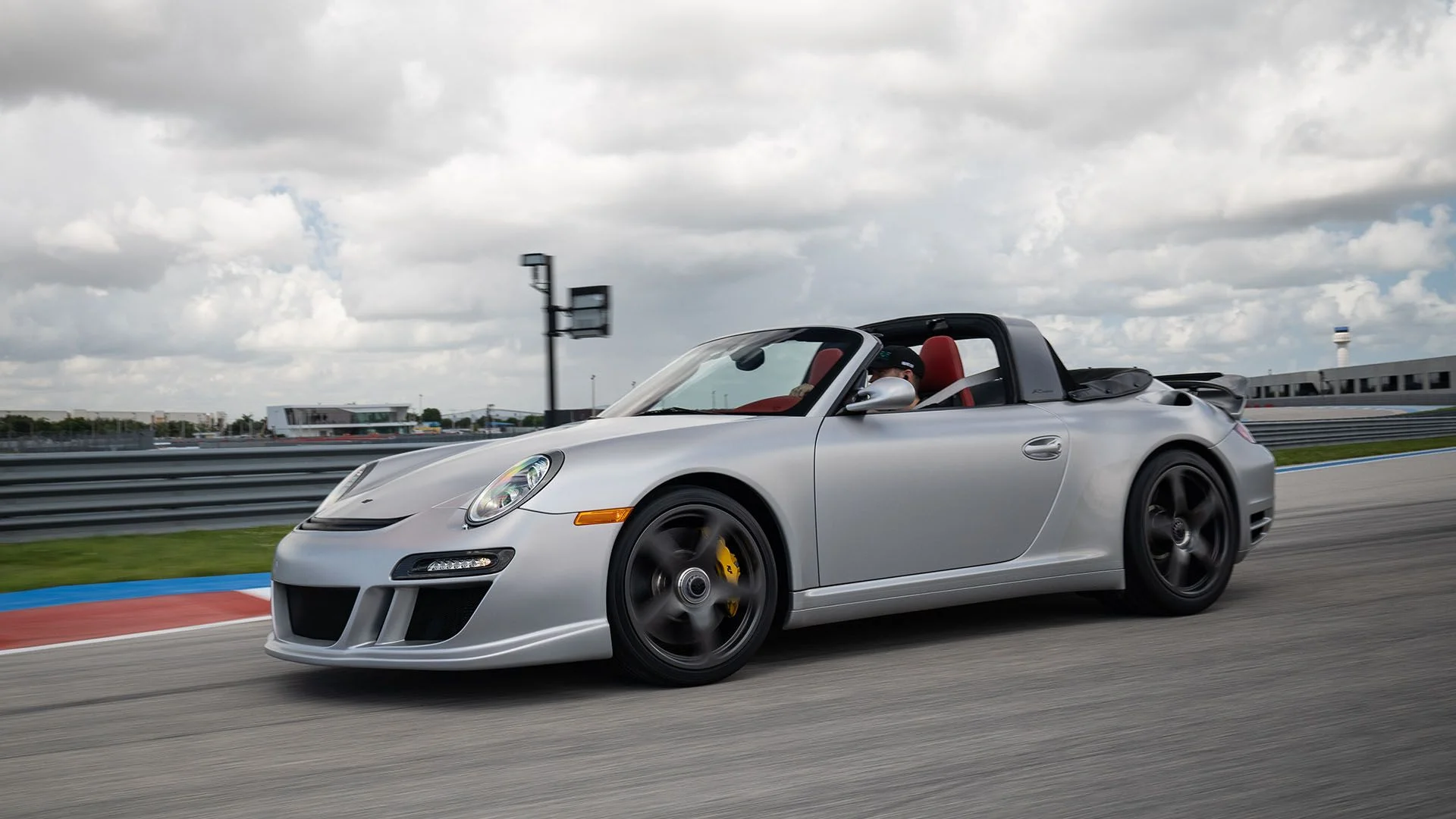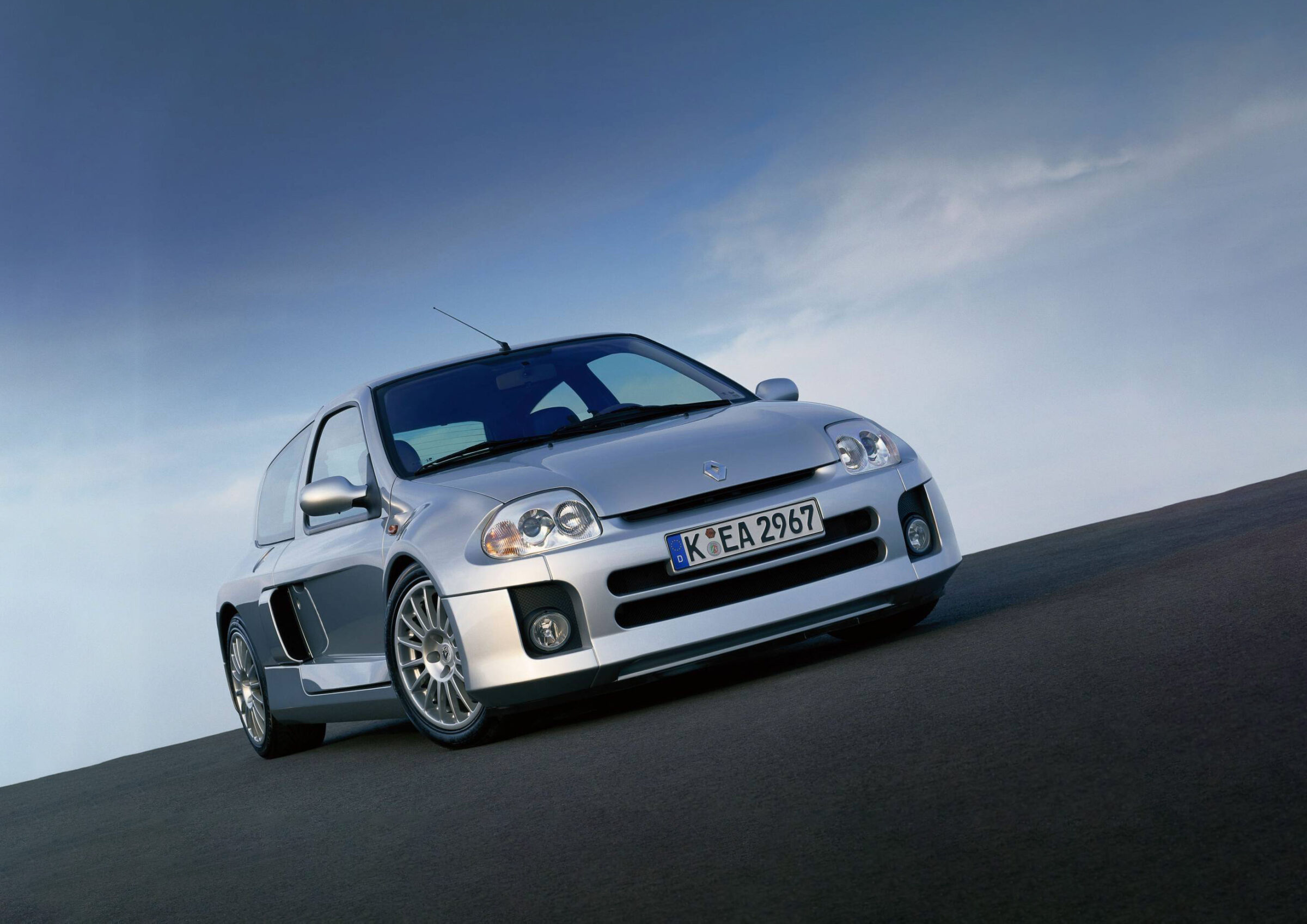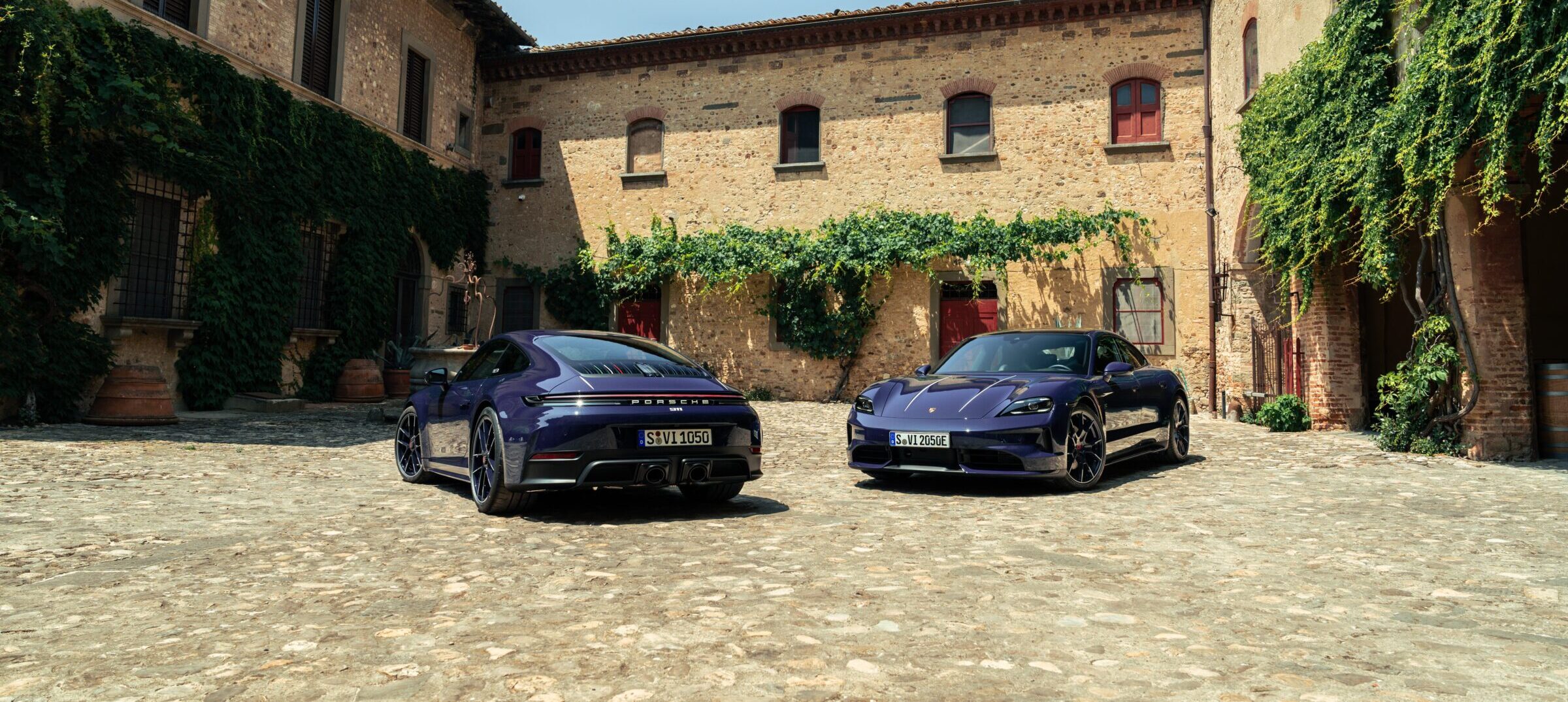Chevrolet Corvette C8 Stingray
When Chevrolet announces a new generation of its sports car icon Corvette, fans all over the world, especially of course in their home country USA, are more than excited. With the now presented eigth generation, there was even more attention from global car fans than with all previous model changes, as the Americans had announced that they would abandon the classic layout with front engine and rear-wheel drive for the first time. This was a characteristic feature of the Corvette since production begun in 1953. Now they favour a mid-engine. Our British friends have a certain expression for such a development: “Shocking!” The Americans generally take a more relaxed view, although traditions are also held high beyond the big pond. So the discussions before the unveiling were heated and the opinions divided. From ‘that’s no Corvette anymore’ to ‘best Corvette ever’ the statements were spread. The truth might be somewhere in between now after the presentation took place.
Looking at the first photos of the new model, one immediately notices that Chevrolet not only changed the engine layout, but also had to change the proportions of the American sports car fitting to the new concept. Since the second generation of the Corvette, the appearance of the model has been characterised by classic sports car dimensions with a long bonnet, a narrow cell for the passengers and a short rear. Due to the mid-engine layout, the driver’s position was shifted forward by 42 centimeters. The front end, which now only has a small boot, is much shorter. Behind the driver is space for the V8 and another additional trunk compartment. The classic look gave way to modern mid-engined proportions, normally better known from competitors from Bella Italia.
However, the designers of the Corvette C8 Stingray can be proud of the fact that they have convincingly solved the balancing act between tradition and modernity. Although the shapes have changed considerably and are unusual for the cast-iron fans of the brand, the details have succeeded in adopting design quotations from the C7 in particular and thus making the C8 appear to be a Corvette at first glance. In the front view, the arrangement of the large air intakes is particularly reminiscent of the ZR1 version of the C7, and the rear view also leaves no doubt that the new Corvette is on its way in front of you. At the production start the C8 drives up as a Targa version, but the Convertible version has already been announced and also been shown in preview pictures during the world debut of the C8. The market launch of the Convertible should follow next year. Interesting detail on the first photos: the form of the roof covering in open condition reminds strongly of the Ferrari 488 Spider or the McLaren Spider models, so we expect a folding hardtop.
Technically, Chevrolet has fortunately avoided jumping onto the train of downsizing and relying on engines with small capacity and turbochargers, as Ferrari and Porsche recently did. On the contrary, the new Corvette is powered by the current version of the famous small-block engine with the abbreviation LT2, which embodies the best American engine building tradition with 450 hp from 6.2 liters of displacement. If the performance exhaust system is ticked as an optional extra, the engine even delivers 495 hp and 637 newtonmeters of torque. It should be noted that this engine consistently ignores many modern elements of engine technology. The only two valves per cylinder are actuated by a lower camshaft via rods – and this has remained unchanged for over 50 years with this engine. In terms of engine technology, the C8 has thus remained a true Corvette, but this doesn’t mean that any technical progress was avoided. For the first time, the V8 engine features a dry sump oil system and three oil suction pumps for improved performance on the racetrack. Thanks to the significant improvements in transverse dynamic capabilities, the dry sump lubrication system of the LT2 engine had to be redesigned for the new Corvette to ensure an adequate oil supply in all directions, even at transverse acceleration levels of over 1 g. However, the engineers of Chevrolet are breaking new ground in terms of power transmission.
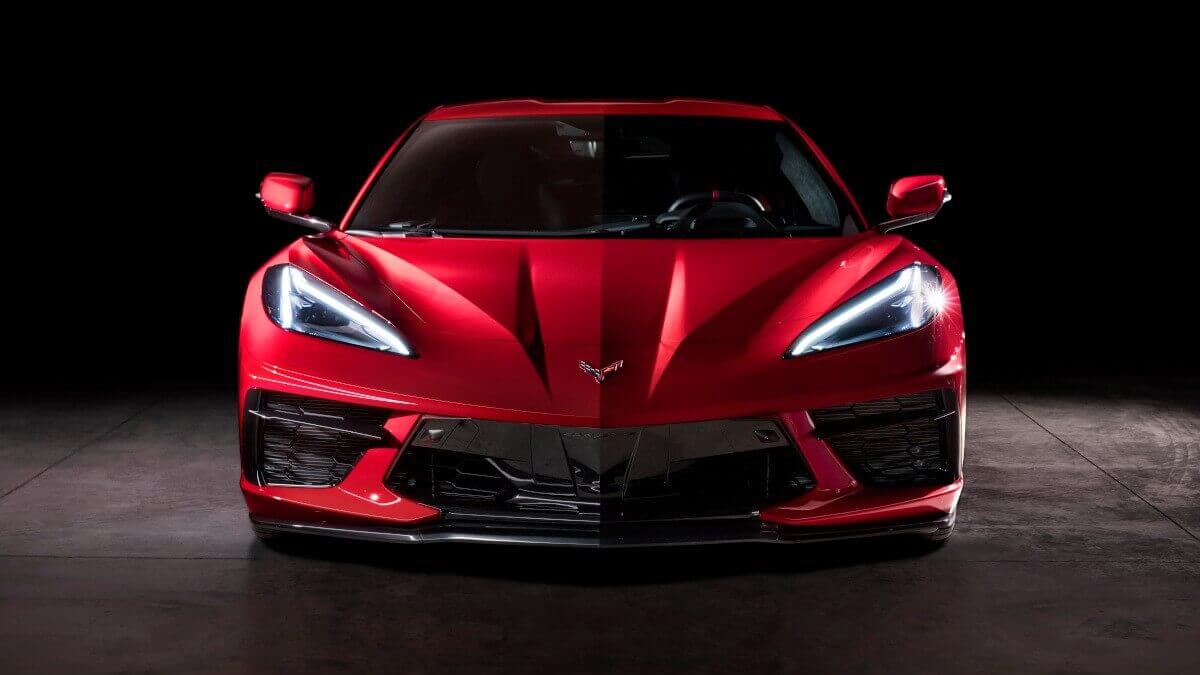









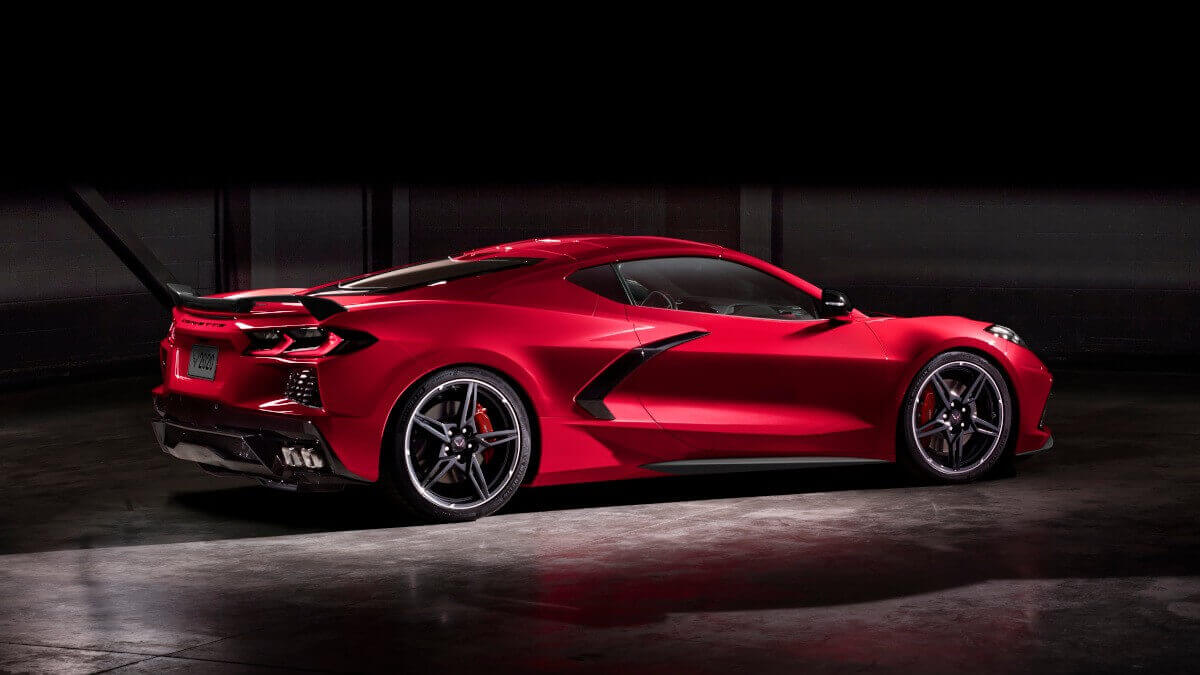



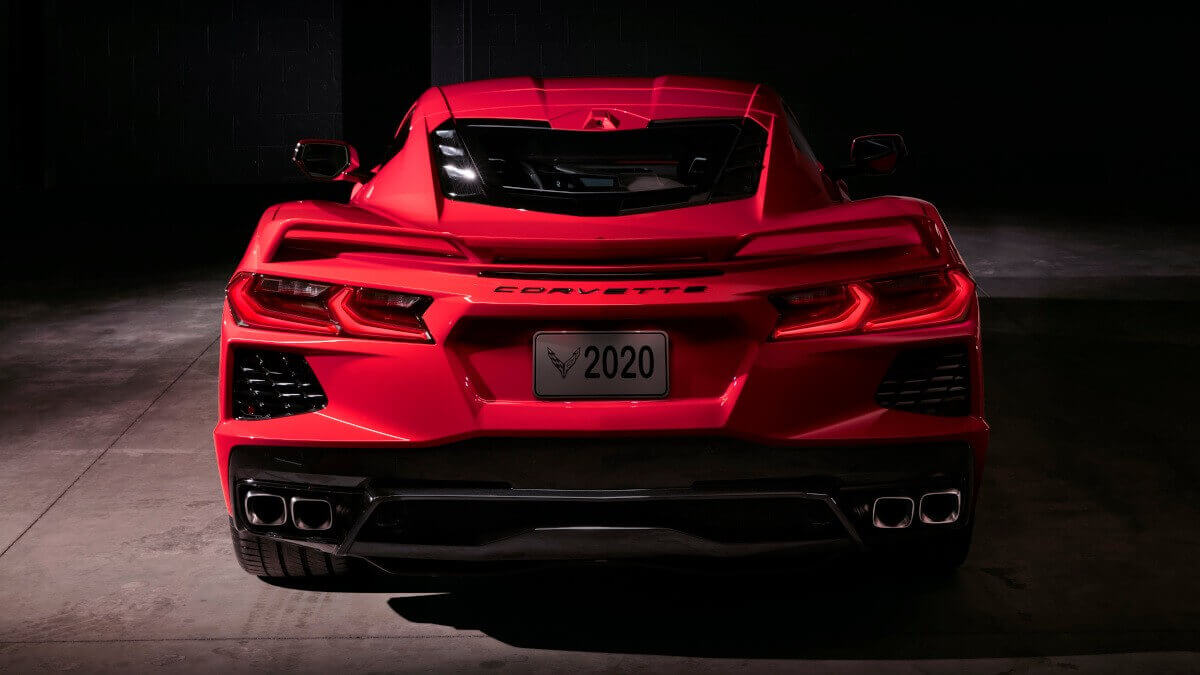



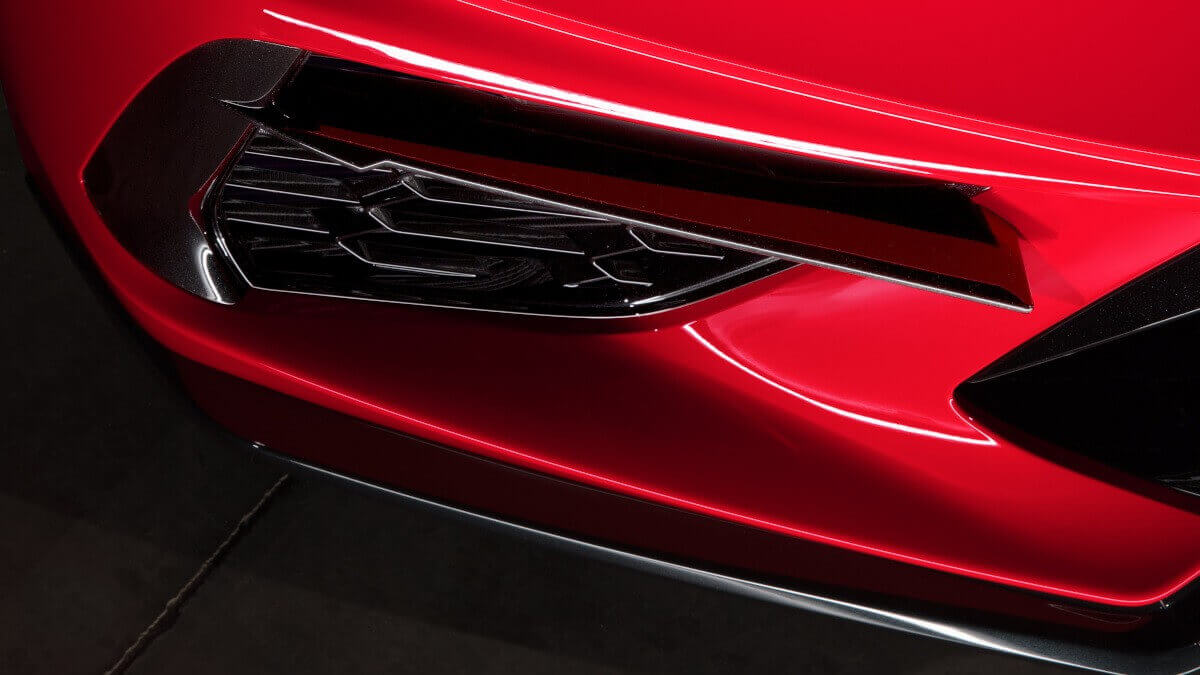



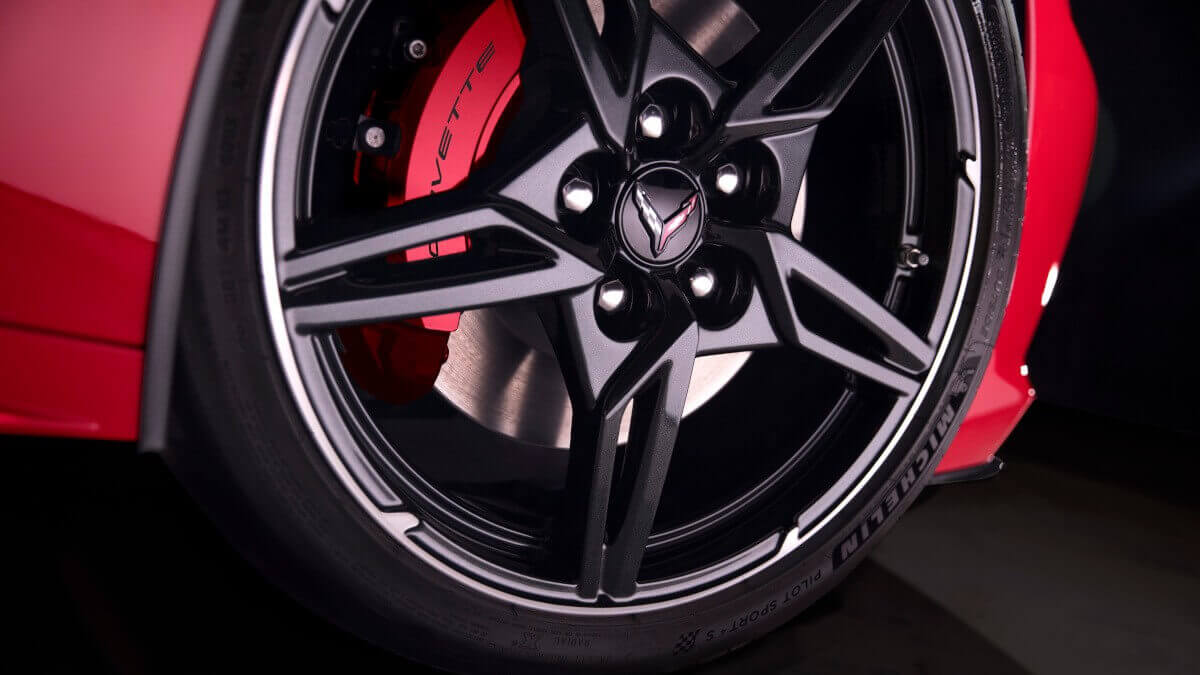



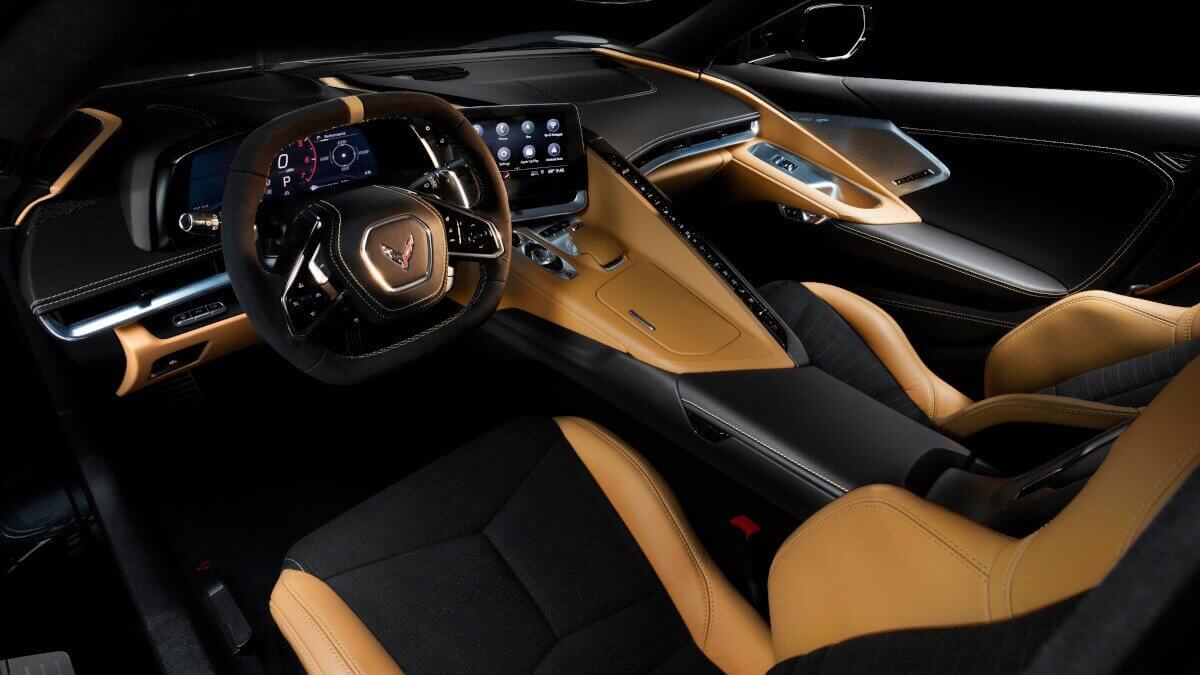

















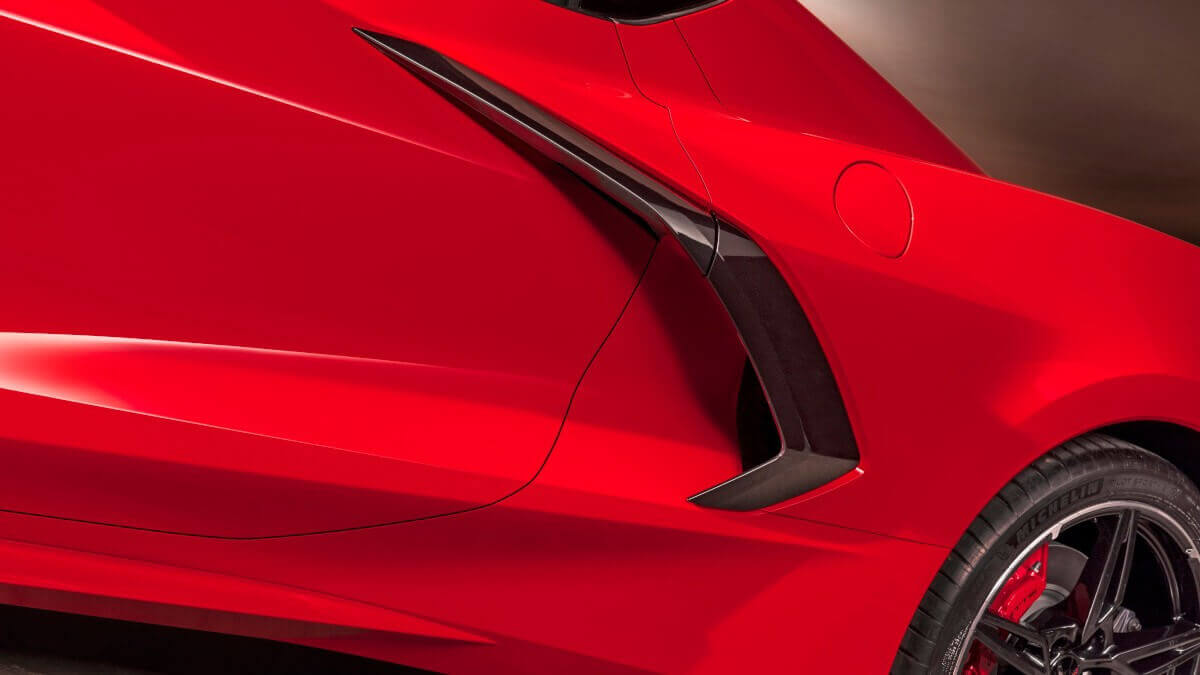

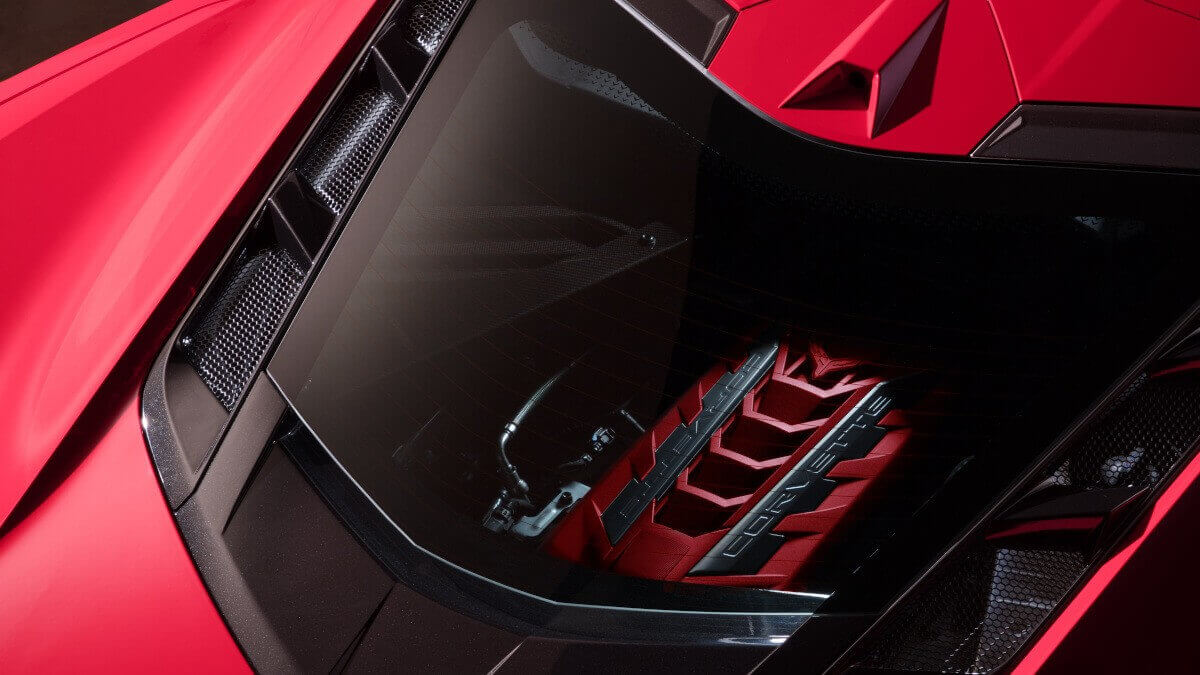

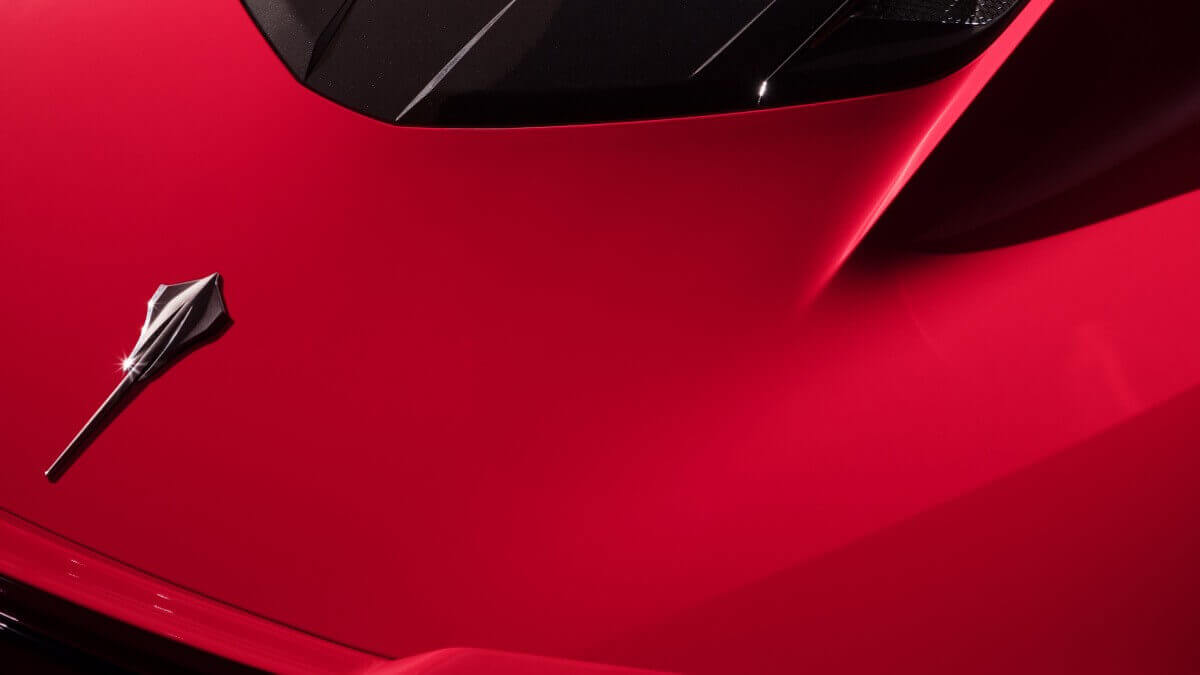

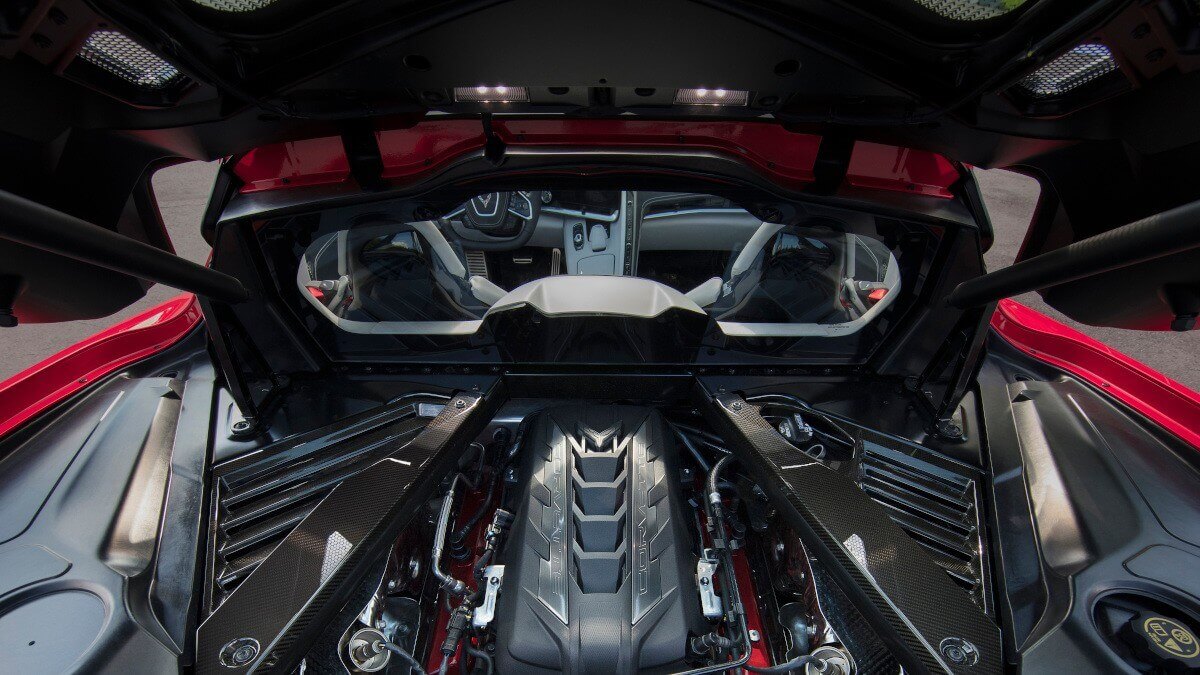





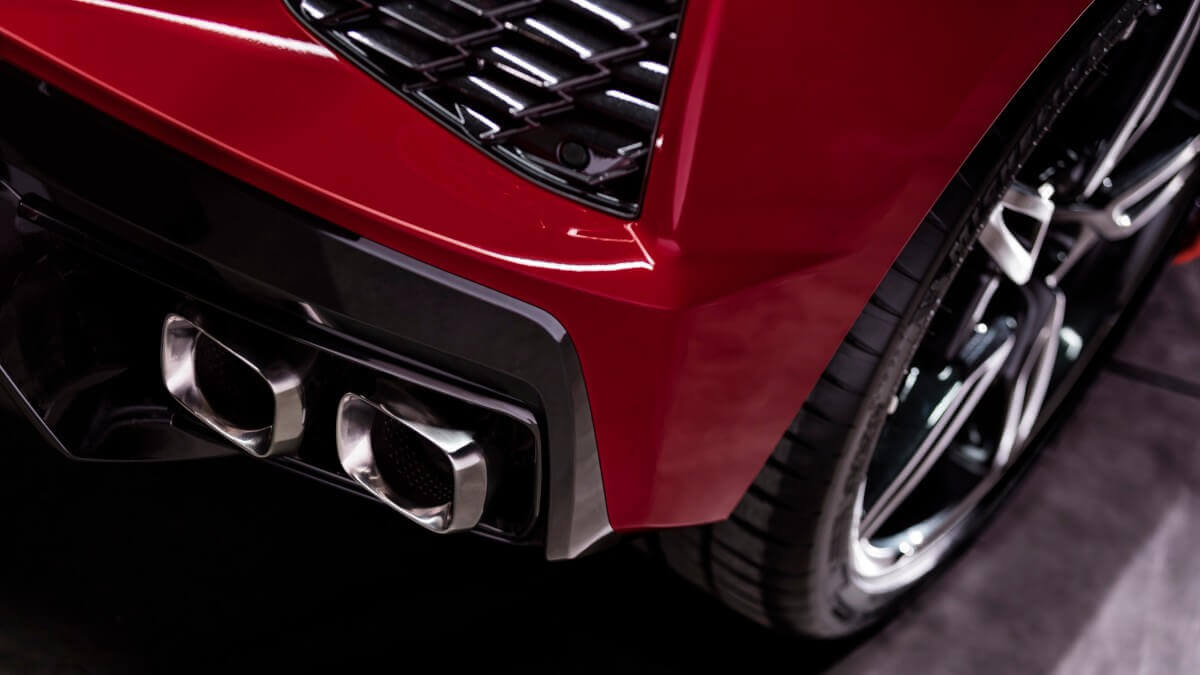

While customers previously had the choice between a classic manual gearbox, in the last version with seven gears, or an equally classic torque converter automatic transmission, the Americans are now opting for an eight-speed dual-clutch transmission (DCT) as the only option. The reaction of the customers remains to be seen. When tuning the DCT, the engineers chose a very low ratio in first gear to use the additional traction for the fastest possible starting acceleration, while the closely graded gears two to six keep the engine in the optimum speed range, especially on the racetrack. The DCT is paired with a new ‘Electronic Transmission Range Selector’. There is no mechanical connection between the selector lever and the gearbox.
While the mid-engine concept already offers the best conditions for agile handling, Chevrolet wasn’t satisfied with it and has developed a completely new chassis that is setup more than ever for use on circuits and got corresponding driving characteristics, but at the same time should offer significantly improved driving comfort. To improve agility, the steering has been given a much more direct setup. The new architecture of the vehicle, due to the mid-engine, places the vehicle’s center of gravity close to the driver’s hips on the inside, so that the vehicle literally turns around the driver. On the front axle, the C8 Stingray comes standard with a lift system that can lift the nose of the car by four centimeters to facilitate driving over speed bumps or entry ramps. For the first time in a sports car, the driver can program up to 1,000 different locations at which the system automatically raises the vehicle up to the selected height at a speed of up to 24 mph.
In the interior, the driver can expect a familiar look coupled with many interesting new features. The design of the dashboard and the center console show at first glance the familiar look of the predecessors C6 and C7. But the more you get into the details, the more you see the changes, for example a new steering wheel with only two spokes, slightly flattened at top and bottom. The analogue round instruments sadly are gone and have given way to modern and versatile programmable displays. Whether or not this is perceived as progress must be decided by each individual. The same goes with the center console, which, as known from the C7, is angled towards the driver in the upper part and tilts towards the driver in the lower, horizontal part. On the right-hand edge, the controls for air conditioning and seat heating are accomodated in a vertical strut that is visually reminiscent of the handlebars for co-drivers in the C6 and C7.
To us, this appears to be a more than dubious solution in which safety and ease of use have been clearly subordinated to the design. Small, confusing switches, which appear illogical at first glance, have to be operated from far away by the driver, who has to turning his gaze away from the road for a long time. A clear step backwards, especially from a manufacturer who has already introduced a head-up display on the C6 back in 2005 so that the driver can keep his eyes on the road. To achieve nice travels even on long journeys, the driver of the new Corvette should be able to sit as comfortably and as good as possible in his car. Chevrolet offers three different seat types for the C8. The sports seats are available in the ‘GT1’, ‘GT2’ and ‘Competition Sport’ levels. Next to that, the customer also has the choice of twelve different exterior colors, six interior colors and six colors for the seat belts.
The new Chevrolet Corvette C8 Stingray is already part of the model year 2020. Production of the US version will start towards the end of 2019 at Corvette’s traditional plant in Bowling Green, Kentucky. On the domestic market, prices for the basic model are expected to start at just under $ 60,000. Further information, including the market launch in Europe or the production start of the right-hand drive (RHD) version, which will be offered for the first time, is not yet known.
Images: Chevrolet


